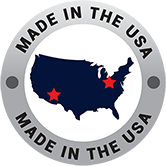Rake & Probe Manufacturing
Product Overview
CEL manufactures temperature and pressure mechanical instrumentation for use throughout the turbine engine test and development industry. Through strict process control, all rakes and probes are manufactured to critical tolerances, thereby ensuring repeatable and accurate data for your test and development programs. These products can be designed by our engineering team or we will build to customer specifications.
Rake & Probe Refurbishment
Product Overview
CEL engineers and technicians are equipped to evaluate the feasibility of refurbishing used rakes and probes. When applicable, we can confidently refurbish this instrumentation for use as originally designed.
Duct Instrumentation
Product Overview
CEL is skilled in the manufacture, assembly, and instrumentation installation of all types of turbine engine ducts and engine dress equipment. We understand the importance of all critical dimensions and features, including sensor placement and flow path profiles to ensure accurate and repeatable data for your test and development programs.
Strain Gauge
Product Overview
CEL strain gauge technicians understand the importance of precise gauge placement and orientation. Great care is taken in surface preparation, gauge installation, and egress routing, to ensure successful test data under critical conditions. We apply a variety of gauge types including foil, free filament, semiconductor, and fiber optic, in many configurations and sizes.
Electrical Slip Rings
Product Overview
CEL provides and installs high speed slip rings (up to ~100,000rpm) and FORJs that transfer electrical or optical sensor signals from rotating hardware to your data acquisition system. Both technologies provide clean and quiet signals with long life and high sensor counts. FORJs can be especially beneficial in areas where EMI is a concern.
Engine Component Instrumentation
Product Overview
CEL provides and installs high speed slip rings (up to ~100,000rpm) and FORJs that transfer electrical or optical sensor signals from rotating hardware to your data acquisition system. Both technologies provide clean and quiet signals with long life and high sensor counts. FORJs can be especially beneficial in areas where EMI is a concern.



